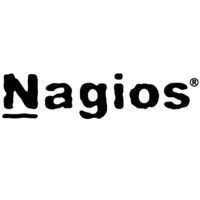Need advice about which tool to choose?Ask the StackShare community!
AppDynamics vs Nagios: What are the differences?
Introduction
AppDynamics and Nagios are both popular monitoring tools used in the field of IT operations. While they both serve the purpose of monitoring applications and infrastructure, there are key differences between the two. This article will outline six major differences between AppDynamics and Nagios.
Architecture: AppDynamics is built on a distributed architecture, allowing it to monitor applications and infrastructure in a highly scalable manner. On the other hand, Nagios has a more traditional architecture, which can limit its scalability when it comes to monitoring large-scale environments.
Ease of Use: AppDynamics provides a user-friendly interface and a comprehensive dashboard, making it easier for users to navigate and understand the monitoring data. Nagios, although highly customizable, can be more complex to set up and requires a deeper technical understanding to effectively use its features.
Alerting and Notification: AppDynamics offers advanced alerting and notification capabilities, allowing users to set up customized alerts based on specific performance thresholds. Nagios also provides alerting and notification features, but they may require more manual configuration and adjustments to match the desired criteria.
Intelligent Monitoring: AppDynamics utilizes AI and machine learning capabilities to provide intelligent means of monitoring and analyzing application performance. It can automatically detect anomalies and provide insights into issues that may impact user experience. Nagios, while providing monitoring capabilities, relies more on manual configuration and decision-making.
Integration: AppDynamics offers seamless integration with other popular monitoring tools, allowing for an all-in-one monitoring solution. Nagios, being an open-source tool, can also be integrated with various plugins and extensions, but the process may require more technical expertise.
Scalability: AppDynamics is designed to handle large-scale environments and can scale horizontally, making it suitable for enterprises with complex infrastructures. Nagios, although it can be expanded with distributed setups, may require additional configuration and setup to achieve similar scalability.
In summary, AppDynamics offers a distributed architecture, user-friendliness, advanced alerting, intelligent monitoring, easy integration, and scalability. Nagios, although highly customizable and open-source, may require more technical expertise to set up, lacks the advanced intelligence, and can be more complex to scale in large environments.
Hey there! We are looking at Datadog, Dynatrace, AppDynamics, and New Relic as options for our web application monitoring.
Current Environment: .NET Core Web app hosted on Microsoft IIS
Future Environment: Web app will be hosted on Microsoft Azure
Tech Stacks: IIS, RabbitMQ, Redis, Microsoft SQL Server
Requirement: Infra Monitoring, APM, Real - User Monitoring (User activity monitoring i.e., time spent on a page, most active page, etc.), Service Tracing, Root Cause Analysis, and Centralized Log Management.
Please advise on the above. Thanks!
Hi Folks,
I am trying to evaluate Site24x7 against AppDynamics, Dynatrace, and New Relic. Has anyone used Site24X7? If so, what are your opinions on the tool? I know that the license costs are very low compared to other tools in the market. Other than that, are there any major issues anyone has encountered using the tool itself?
what are the most important things you are looking for the tools to do? each has their strong points... are you looking to monitor new tech like containers, k8s, and microservices?
- free open source
- modern interface and architecture
- large community
- extendable I knew Nagios for decades but it was really outdated (by its architecture) at some point. That's why Icinga started first as a fork, not with Icinga2 it is completely built from scratch but backward-compatible with Nagios plugins. Now it has reached a state with which I am confident.
Pros of AppDynamics
- Deep code visibility21
- Powerful13
- Real-Time Visibility8
- Great visualization7
- Easy Setup6
- Comprehensive Coverage of Programming Languages6
- Deep DB Troubleshooting4
- Excellent Customer Support3
Pros of Nagios
- It just works53
- The standard28
- Customizable12
- The Most flexible monitoring system8
- Huge stack of free checks/plugins to choose from1
Sign up to add or upvote prosMake informed product decisions
Cons of AppDynamics
- Expensive5
- Poor to non-existent integration with aws services2





































